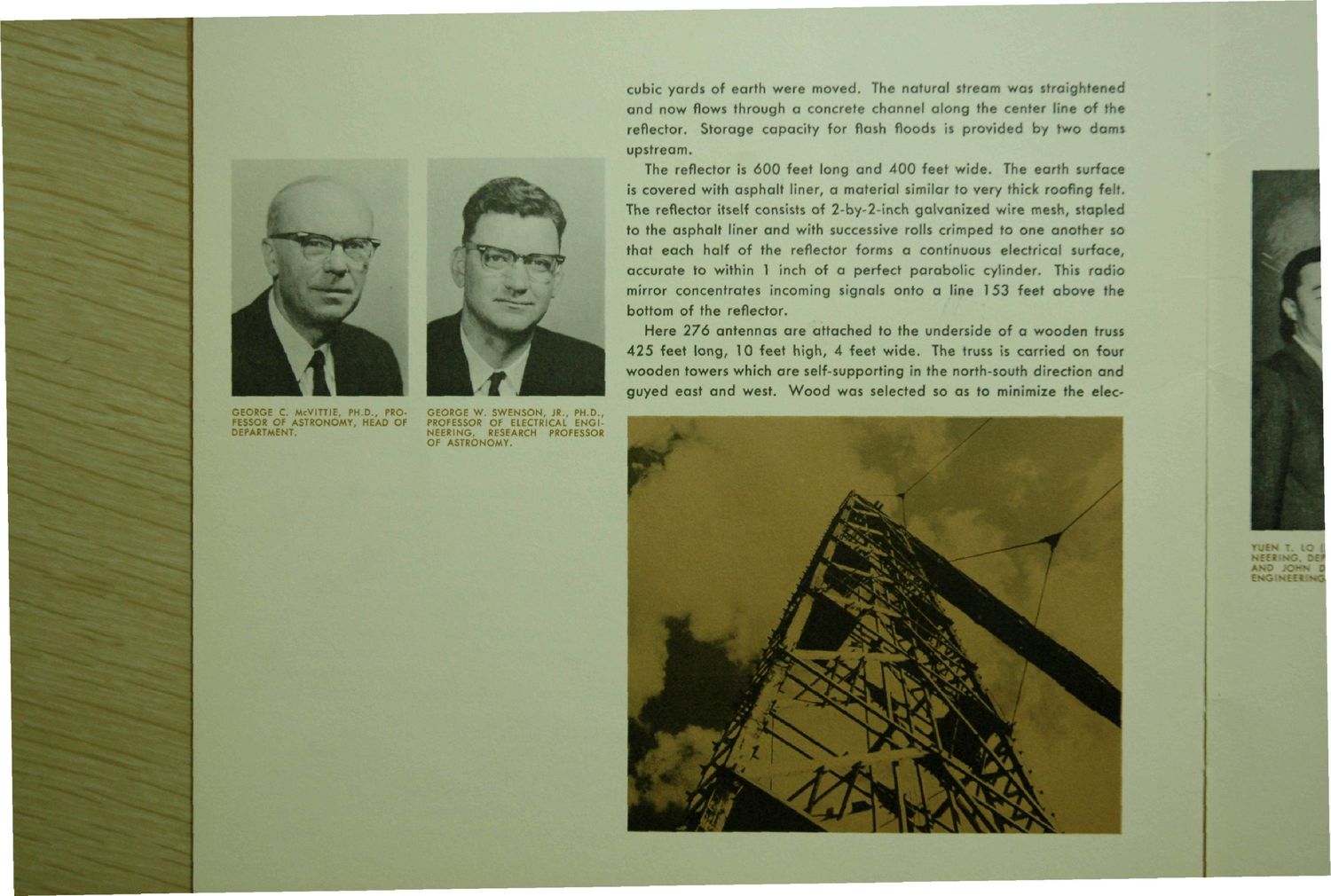| |
| |
Caption: Dedication - Radio Telescope
This is a reduced-resolution page image for fast online browsing.

EXTRACTED TEXT FROM PAGE:
cubic yards of earth were moved. The natural stream was straightened and now flows through a concrete channel along the center line of the reflector. Storage capacity for flash floods is provided by two dams upstream. The reflector is 600 feet long and 400 feet wide. The earth surface is covered with asphalt liner, a material similar to very thick roofing felt. The reflector Itself consists of 2-by-2-inch galvanized wire mesh, stapled to the asphalt liner and with successive rolls crimped to one another so that each half of the reflector forms a continuous electrical surface, accurate to within 1 Inch of a perfect parabolic cylinder. This radio mirror concentrates incoming signals onto a line 153 feet above the bottom of the reflector. Here 276 antennas are attached to the underside of a wooden truss 425 feet long, 10 feet high, 4 feet wide. The truss is carried on four wooden towers which are self-supporting in the north-south direction and guyed east and west. Wood was selected so as to minimize the elecGEORGE C McVITTIE, PH.D., PROFESSOR OF ASTRONOMY, HEAD OF DEPARTMENT. GEORGE W. SWENSON, JR., PH.D., PROFESSOR OF ELECTRICAL ENGINEERING, RESEARCH PROFESSOR OF ASTRONOMY.
| |